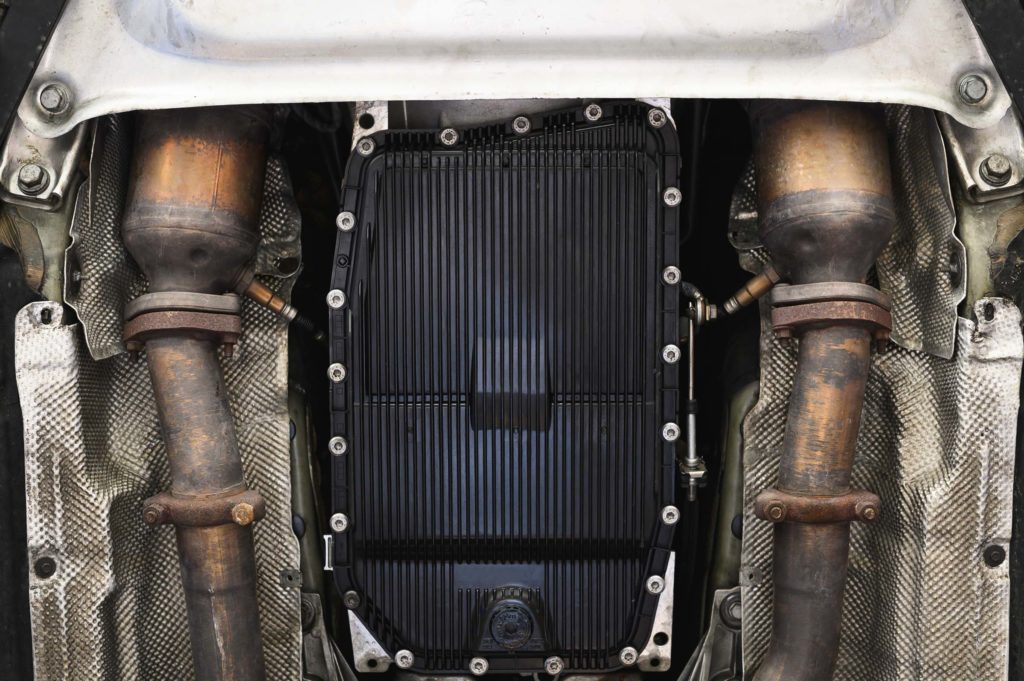The transmission fluid temperature sensor keeps track of the temperature of the automatic transmission fluid that cools and lubricates the transmission. It sends its readings to the powertrain control module (PCM), which adjusts various transmission-related processes like the torque converter clutch operation and line pressure control.
If the PCM detects an incorrect signal from the transmission temperature sensor, the module will set a code P0710 for the technician.
What Does the P0710 Code Mean?
The Diagnostic Trouble Code (DTC) P0710 indicates “Transmission Fluid Temperature Sensor “A” Circuit.”
The transmission fluid temperature sensor is a thermistor whose internal resistance is inversely proportional to the temperature of what it’s measuring. Typically, it is located in the transmission oil pan, where it has direct access to the transmission fluid.

Once the transmission fluid temperature sensor takes the temperature of the lubricant inside the transmission, it sends a signal to the PCM. This signal has a resistance value corresponding to the automatic transmission fluid’s temperature. The hotter the fluid, the lower the signal’s resistance value.
The signal sent by the transmission fluid temperature sensor must fall within a certain resistance value range established by the PCM. If the sensor’s resistance value is too high or too low, the diagnostics will set the powertrain code P0710.
Note: The definition of code P0710 can differ between vehicle manufacturers. Read the relevant repair manual or repair database for the exact definition of the powertrain code P0710.
What are the Common Causes of the P0710 Code?
- Failed transmission fluid temperature sensor
- Faulty powertrain control module (PCM) or transmission control module (TCM)
- Wiring problems like open or shorted circuits, corroded wires, and loose or damaged connectors
- Internal transmission failure

What are the Common Symptoms of the P0710 Code?
- Illuminated check engine light
- Transmission cannot shift between gears properly
- Illuminated transmission temperature warning light
How to Diagnose the P0710 Code
The DTC P0710 is a generic powertrain code that covers select OBD-II equipped vehicles equipped with a transmission fluid temperature sensor. Despite its generic designation, the process for diagnosing and repairing it can vary between vehicle models.
If you don’t have the experience or skill to run diagnostic tests on your vehicle, bringing it to a professional mechanic is the recommended course of action. Otherwise, you can go ahead and take a look at the problem.
To help you get started, here are some videos that can give you an idea of what testing and repairing the transmission fluid temperature sensor might involve:
How to Fix the P0710 Code
Attempting to fix a P0710 code can become a challenging job if you don’t have the right tools and know-how to test the transmission fluid temperature sensor and its wiring. In most cases, it’s best to get professionals to handle this issue for you.
For DIYers with advanced technical knowledge and hands-on experience, it will help to refer to the appropriate repair manual or an online repair database.
Any information provided on this Website is for informational purposes only and is not intended to replace consultation with a professional mechanic. The accuracy and timeliness of the information may change from the time of publication.















